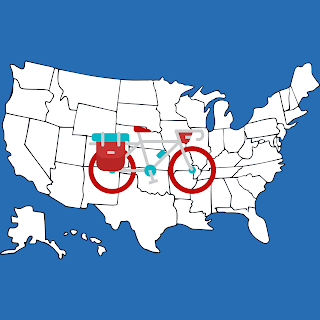Is it Safe to Ride a Bicycle Across the United States?
Embracing the Adventure and Evaluating the Risks
Cycling across the United States offers a unique opportunity to witness the country's natural beauty, encounter diverse cultures, and foster personal growth. Yet, it is crucial to recognize the inherent risks to ensure a safe journey:
a. Traffic Challenges: One of the most significant risks faced by cyclists is sharing the road with motor vehicles. Being aware of your surroundings and adopting defensive riding practices can significantly enhance safety.
b. Weather Uncertainties: The United States boasts a myriad of climates, from scorching deserts to frigid mountain regions. Adequately preparing for varying weather conditions is essential for your well-being and enjoyment.
c. Terrain Demands: The landscapes across the country vary drastically, with mountains, rolling hills, and flat plains. Preparing physically and mentally for the challenges presented by diverse terrains is paramount.
d. Wildlife Encounters: As you venture through different regions, you may encounter various wildlife species. Understanding how to coexist with animals and implementing appropriate precautions is essential for both your safety and theirs.
e. Endurance and Fatigue: Biking across the United States is a test of endurance, and fatigue can become a significant risk. Strategically planning rest stops and managing your energy levels are key to overcoming this challenge.
Safety Measures for a Smooth Ride
To embark on a safe and memorable journey, take proactive steps to protect yourself and mitigate potential risks:
a. Defensive Riding: Always prioritize your safety by riding defensively. Maintain a predictable path, use hand signals, and make eye contact with motorists to ensure they are aware of your presence.
b. Helmet Safety: Never compromise on wearing a well-fitted helmet; it is the single most crucial safety gear that can protect you from severe head injuries.
c. Lighting Up the Night: Utilize lights and reflective gear during nighttime cycling to make yourself visible to drivers and other road users.
d. Group Riding Benefits: Consider traveling with a group of fellow cyclists for increased visibility, mutual support, and a sense of camaraderie. Group members can also share navigation duties, reducing the chances of getting lost.
e. Weather Preparedness: Stay informed about weather forecasts and pack appropriate clothing and gear to shield yourself from adverse weather conditions.
f. Strategically Plan Breaks: Avoid pushing yourself to exhaustion by scheduling regular breaks to rest, refuel, and rejuvenate during your journey.
Detailed Planning for a Seamless Experience
a. Route Selection: Plan your route meticulously, choosing roads and paths that prioritize cyclist safety. Utilize specialized cycling maps and resources to identify designated bike lanes and bike-friendly roads.
b. Informing Loved Ones: Share your travel itinerary and estimated arrival times with someone trustworthy. Regularly check-in with them to keep them updated on your progress and well-being.
c. Essential Gear: Carry a fully stocked first-aid kit with bandages, antiseptic ointment, pain relievers, and other medical supplies. A reliable cell phone is a must for emergencies.
d. Embrace Local Support: Familiarize yourself with the towns and cities along your route to identify places where you can find accommodations, food, and necessary supplies.
e. Bicycle Maintenance: Ensure your bicycle is in optimal condition before commencing your journey. Regularly check the brakes, gears, and tires, and carry basic repair tools to address minor issues on the road.
Embracing the Journey's Rewards
The Great American Journey is not merely about reaching your destination; it's about the experiences and personal growth encountered along the way. Embrace the breathtaking landscapes, engage with locals, and immerse yourself in the vibrant culture of each region you traverse.
Conclusion
Is it safe to ride a bicycle across the United States? Cycling across the United States is an unparalleled adventure that offers both challenges and rewards. With proper planning, precautionary measures, and a positive spirit, you can minimize risks and embark on a safe and unforgettable journey. From the diverse landscapes to the enriching encounters, the Great American Adventure awaits you with open arms. So, gear up, pedal on, and let the wonders of this epic cross-country adventure unfold before you. Happy trails!
Here is my next post: Choosing the Right Clothing for Bicycle Touring




